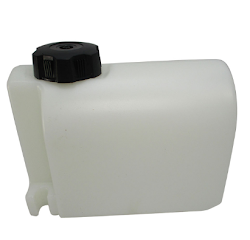Polyethylene vs. Metal Mini Bike Gas Tank
What do you look for when you buy a mini bike gas tank? It should be tough, dependable, and affordable. Steel fulfills all these criteria but they are heavy too consuming much fuel. With the focus now shifting to building environmentally-friendly mini bikes that consume gas more efficiently, other lighter materials have now taken centerstage.
This post will go into the merits and demerits of
polyethylene vs. metal mini bike gas tank.
Polyethylene mini bike gas tank
·
While breakthroughs in steel
manufacturing have made the metal more flexible, it still does not come close
to polyethylene. It can be customized to any shape.
·
Since plastic is a softer material, it
will flatten and bend in the case of a fire or accident instead of rupturing
like its steel counterparts.
·
Polyethylene
mini bike gas tank is lighter than steel and can weigh as
much as 20% less leading to better fuel economy. Replacement tanks though are
made of thicker plastic for safety and to meet regulatory norms.
·
Polyethylene gas tanks are not affected
by the elements and the rigors of the road as they do not corrode when in touch
with water, salt, or gravel.
Because of these features, a polyethylene mini bike gas tank is preferred by manufacturers.
Metal mini bike gas tank
·
Steel gas tanks are less costly because,
over decades, manufacturers have set up sophisticated infrastructure processes
that cut down on the cost of production.
·
Steel can withstand high temperatures,
ensuring your safety in the event of excess heat while on the tracks.
·
Steel is environmentally-friendly and
equipment manufacturers prefer materials that can be recycled.
So, consider these facets before buying a mini bike gas tank.




Comments
Post a Comment